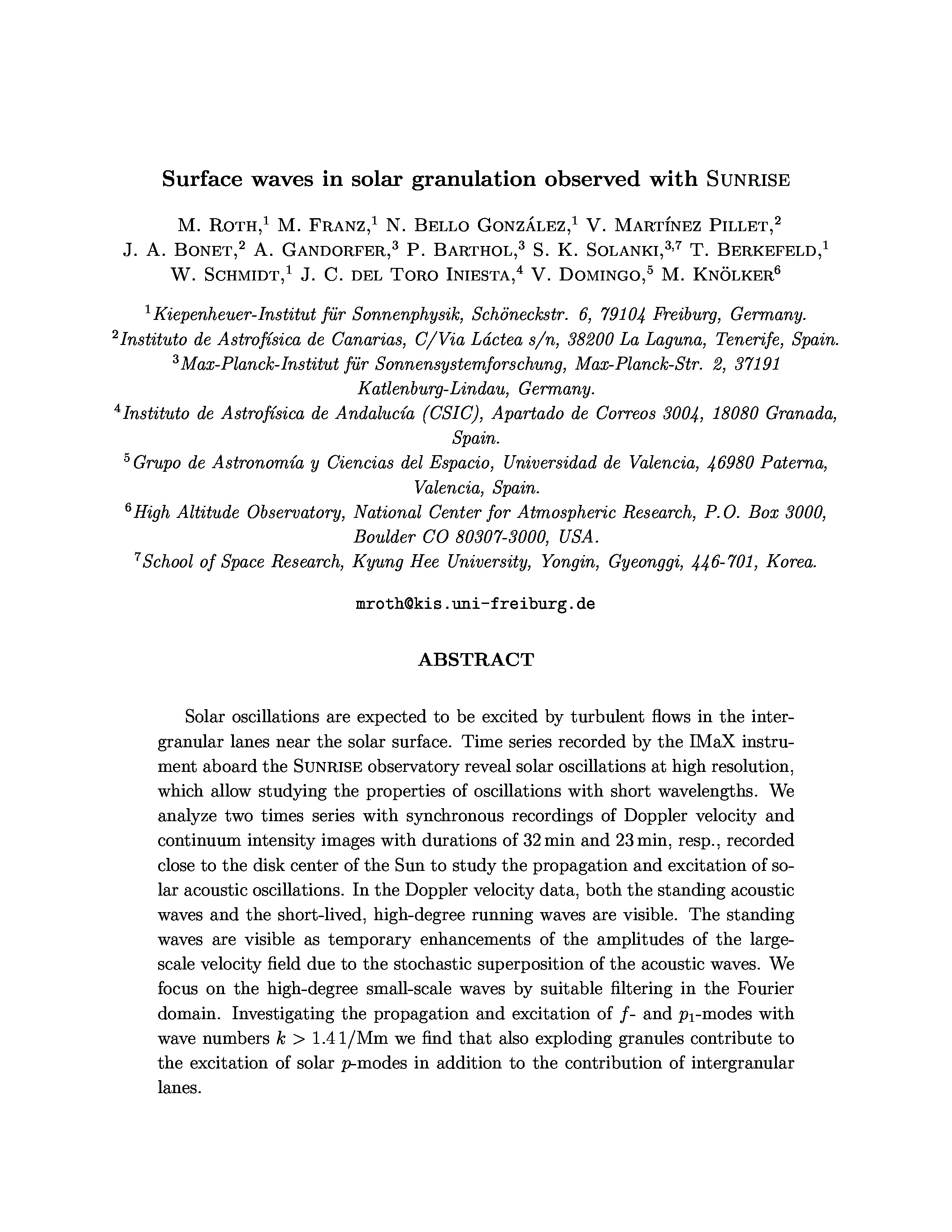Co-author
M. Franz, N. Bello González, V. Martínez Pillet, J.A.Bonet, A. Gandorfer, P. Barthol, S. K. Solanki, T. Berkefeld, W. Schmidt, J. C. del Toro Iniesta, V. Domingo, M. Knölker
Main category
Natural Sciences (Astrophysics and Astrononmy)
Abstract
Solar oscillations are expected to be excited by turbulent flows in the intergranular lanes near the solar surface.
Time series recorded by the IMaX instrument aboard the {\sc Sunrise} observatory reveal solar oscillations at high resolution, which allow studying the properties of oscillations with short wavelengths.
We analyze two times series with synchronous recordings of Doppler velocity and continuum intensity images with durations of 32\thinspace min and 23\thinspace min, resp., recorded close to the disk center of the Sun to study the propagation and excitation of solar acoustic oscillations.
In the Doppler velocity data, both the standing acoustic waves and the short-lived, high-degree running waves are visible. The standing waves are visible as temporary enhancements of the amplitudes of the large-scale velocity field due to the stochastic superposition of the acoustic waves. We focus on the high-degree small-scale waves by suitable filtering in the Fourier domain.
Investigating the propagation and excitation of ff- and p1p1-modes with { wave numbers k>1.4k>1.4\thinspace 1/Mm} we find that also exploding granules contribute to the excitation of solar pp-modes in addition to the contribution of intergranular lanes.
Do you have problems viewing the pdf-file? Download paper
here
If the paper contains inappropriate content, please
report the paper. You will be redirected to the landing page.
